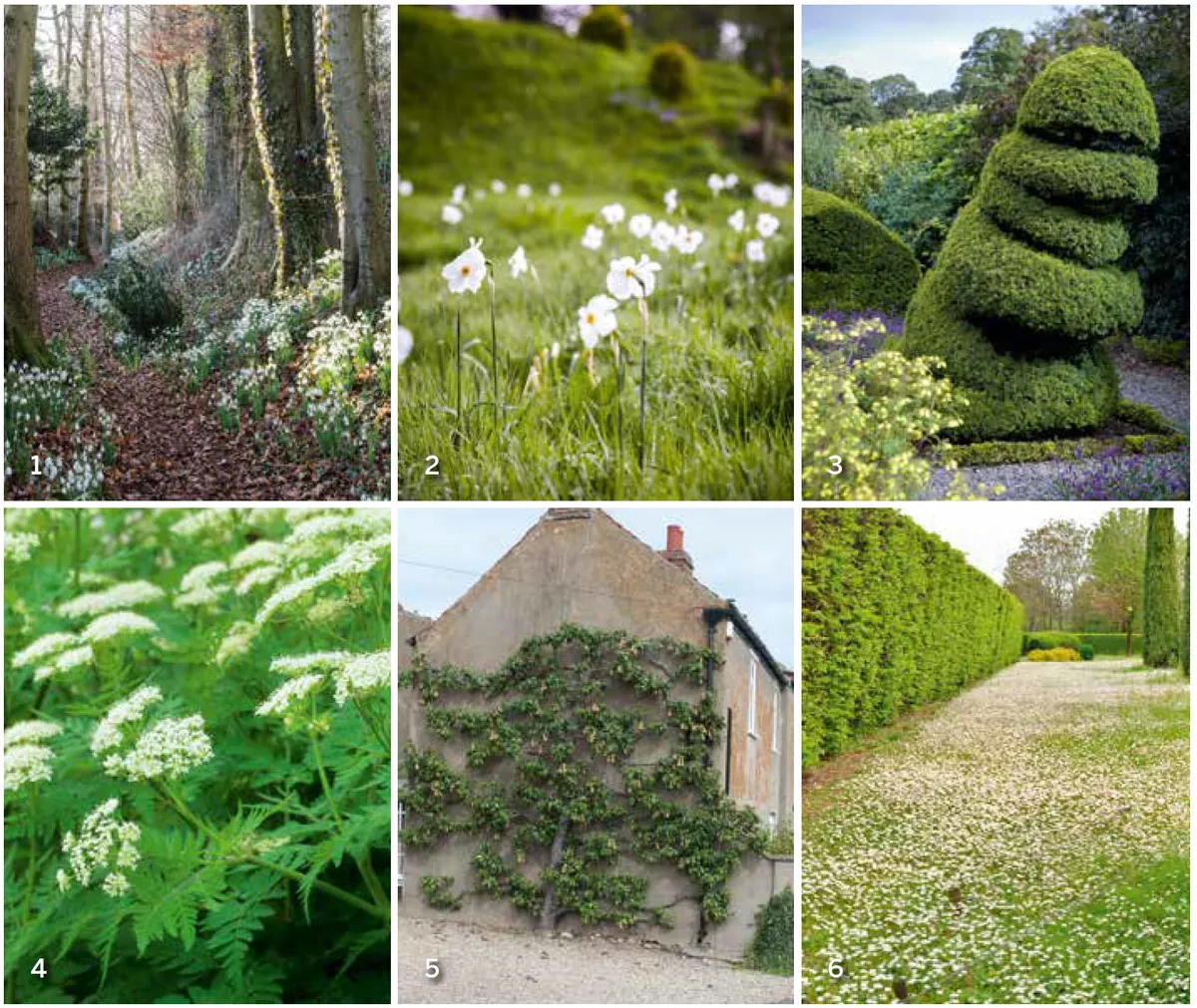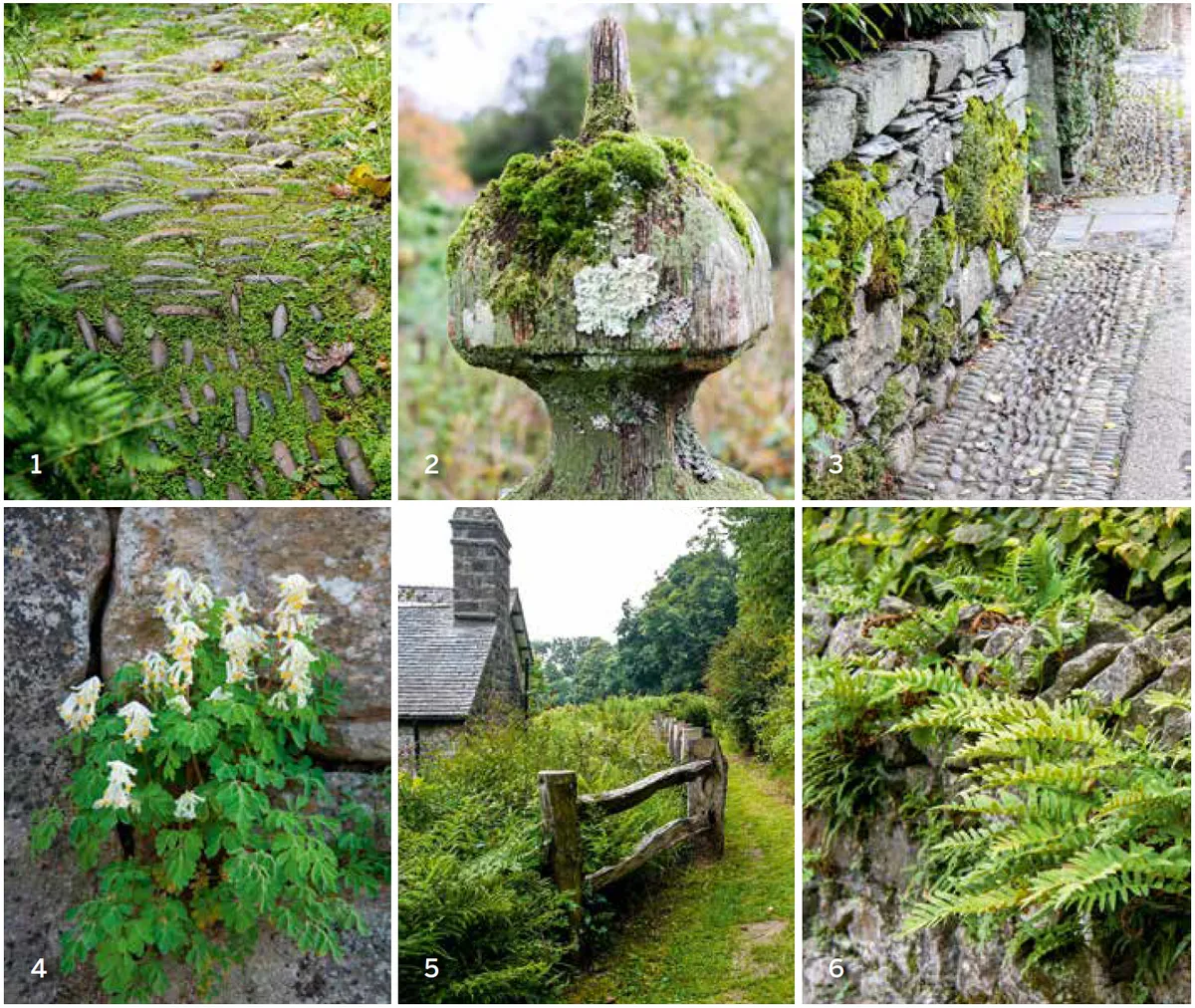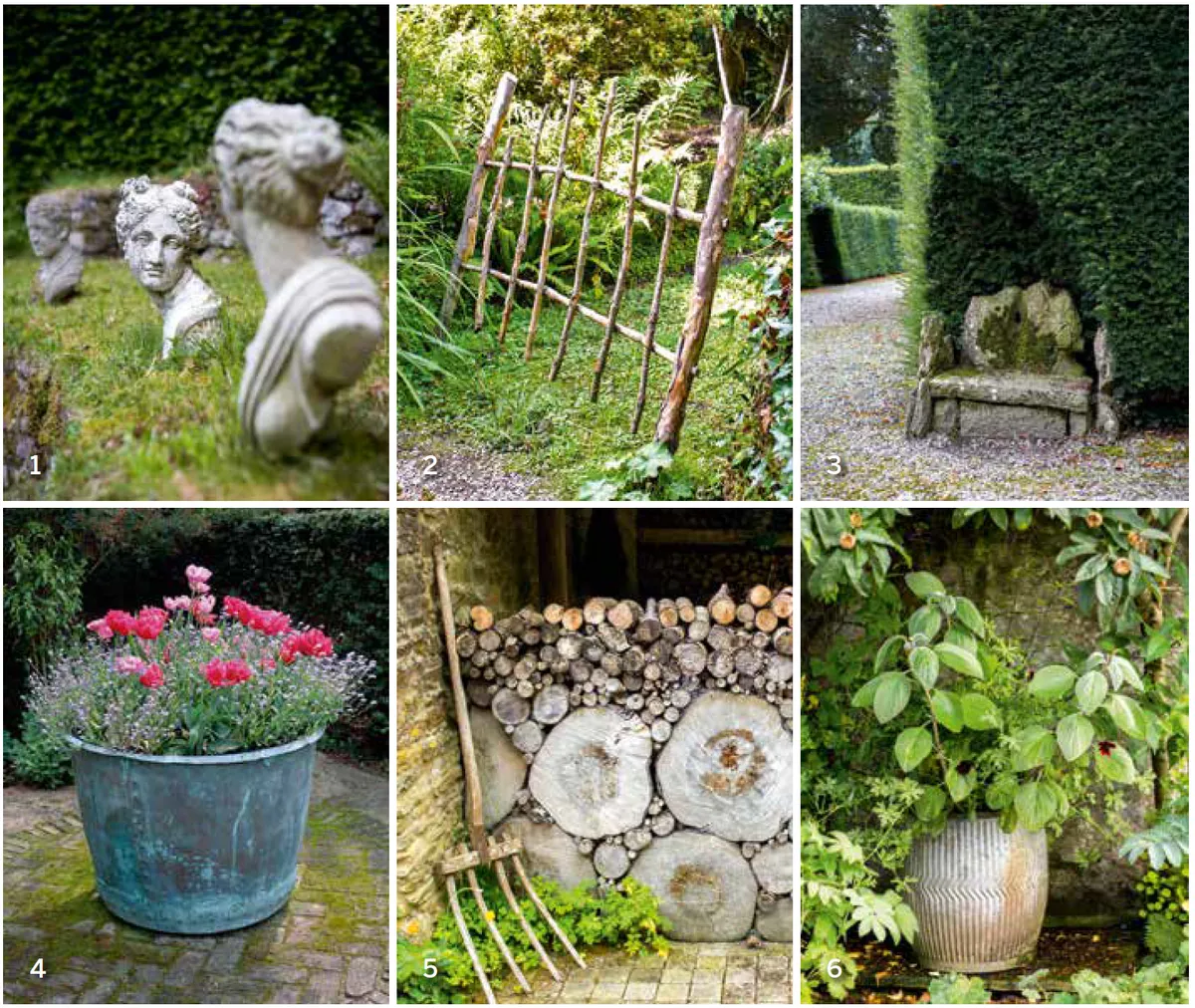It can take years for a garden to reach full maturity and look established with the rest of its surroundings. In a truly ancient garden, paths and steps have been worn down by pounding feet; tree trunks have grown into walls and fence lines; hedges have broadened, hanging out over boundaries, dipping and rolling, eccentric shapes evolved out of years of clipping. Plants grow where seed has survived, tight against walls, out of reach of boot and broom, colonising banks and verges, the less-tended backs of borders and under shrubs. Sun and rain have played their part in creating the patinas that soften and meld the hard surfaces together, encouraging lichens and moss on wind-shaped limbs of trees.
For some this looks like garden work undone; to others it is rare and magical. If you fall into the latter camp, it’s fair game to mimic some of these effects of time. After all, every bit of gardening is in some way a manipulation so here are a few ways to age your garden.
Planting

- Plant snowdrops en masse to give the impression that they have been seeding out for years. Continue to divide and replant them to achieve a thick carpet.
- Choose bulbs that will continue to naturalise in grass, such as the wonderfully old-fashioned pheasant’s eye narcissus (Narcissus poeticus), reputedly first brought to England during the Crusades of the 11th century.
- The clipping of hedges and topiary conveys a sense of long-term intervention. Elements such as these, which show the horticultural skill of the gardener, will suggest a mature garden.
- Sweet cicely (Myrrhis odorata) was an essential plant in a medieval herb garden and is still often found near the doors of old houses. It has beautiful foliage and flowers and every part of it is edible.
- The lyrical character of this conference pear on the gable end of a house in Norfolk suits the house, where a more rigid espalier may have felt too grand.
- Daisies (Bellis perennis), celebrated by Chaucer in the 14th century and treasured by children for making daisy chains, grew freely in the lawns of the gardens of old. Plant them as plugs if you need to encourage them. Why did we ever weed them out?
Hard Landscaping

- These smooth, river-washed cobbles look as though they’ve been embedded in Soleirolia soleirolii, creating the softest looking hard surfacing, but beware of it spreading into grass.
- Gate posts set the tone of a garden from the entrance. Carved oak finials encrusted with moss, suggest that a beautiful, well-worn garden awaits.
- Cobbled or carved stone details for managing the flow of water require a little more effort than modern surface drainage solutions, but have far more character.
- Encourage self-seeders, such as Corydalis ochroleuca (best in damp shade, but will take some sun), that will happily festoon walls and gloomy corners with a froth of creamy-white flowers for several months.
- The size of this chunky fencing in north Wales perfectly suits the scale of the stones in the house in the background. Imagine how much character would be lost if a standard fence had been used instead.
- Polypody (Polypodium vulgare) and maidenhair spleenwort (Asplenium trichomanes) are particularly successful ferns for growing in walls. Both are drought tolerant, but need consistent watering until they are properly established.
Garden details

- Sculpture has been placed with great wit and drama throughout the garden at The Pant, by owners Camilla and Jeremy Swift. These classical busts sit on the banks of an amphitheatre.
- Simple hazel structures, such as this little gate at the entrance to a path, would have been commonplace in gardens of the past.
- This ancient stone seat at Levens Hall in Cumbria is almost engulfed by the hedge. Set seating in clipped niches in hedges to give them this air of mystery.
- Originally used to heat water for the laundry, traditional ‘coppers’ develop a wonderful verdigris patination that blends well with many types of paving.
- A wood store is essential for keeping the hearth burning in old houses, so an old garden should inevitably accommodate one. In the garden at The Old Rectory in Gloucestershire, designed by Dan Pearson, gardener Ian Mannall has made full use of the beautiful decorative qualities of stacked wood.
- Old galvanised dolly tubs make wonderful garden planters. They are a generous size, are easily drilled for drainage, run no risk of frost damage and are of a soft grey tone that perfectly complements old walls and garden greenery.
Words Kristy Ramage
